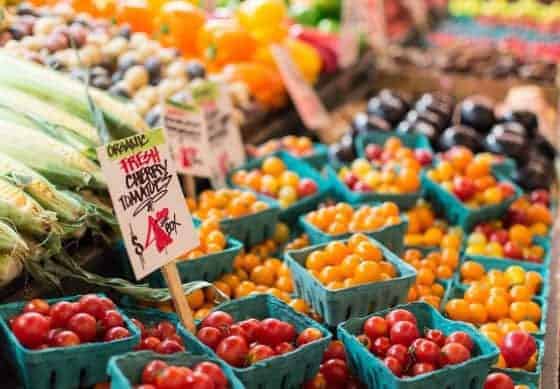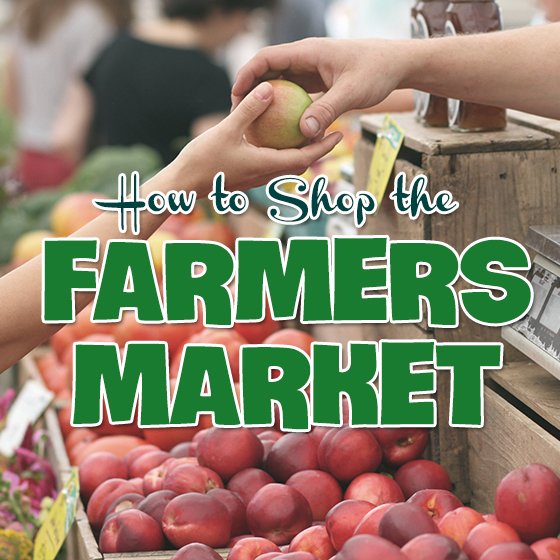As summer wraps up, so will the growing season for most produce throughout the country. Now is the best time to hit up your local farmer’s market to experience the freshest fruits and vegetables you’ll get all year round.
Shopping at the farmer’s market during the summer supports the local community and lowers your carbon footprint, ensuring that the items you bring home came from a nearby farm instead of being shipped halfway around the world.
We’ve all been to the market and come home with a bag of artisan pasta, fresh banana bread, and little to no produce. Before you grab your market bags and head out the door we have a few tricks you should know to help ensure your trip is fruitful.
Make a list of what you need.

Going to the market should mean you don’t need to pick up ANY produce from your local supermarket. Dependent on your meal plan, that might not be a realistic goal. Start with what is currently in season and work backwards to determine which meals you’d like to make this week.
By creating a list of what you need to shop for, you can make sure that you don’t get distracted by the breakfast burritos and locally fermented kombucha.
Don’t be afraid to try new things if you are unable to find what you were looking for. If your plan was to make caprese salad and tomatoes are nowhere to be found, ask the vendor selling eggplant what their favorite recipes are for that item. You might be surprised to learn you want to try a new dish on for size instead of stopping at the supermarket on your way home.
Browse, then buy.

Often several vendors will have the same items. Walking the entire market at least once can help you acclimate to who has what produce and which vendor is offering the best price. Sometimes this translates to buying strawberries from one vendor and lettuce from another.
Be mindful of the produce.
The farmer’s market isn’t the time or place to squeeze the tomatoes. Farmers take pride in bringing only their best items to market, so most options are going to be perfect.
If you’d like the prime picks, take a European approach and ask the vendor to make the selections for you. Specify if you want the ripest items because you are going to be cooking right away or if you plan to wait until later in the week to make your dish. This will ensure that they help you pick the best items for your needs.
Consider a meat vendor.

Purchasing meat at the farmer’s market is almost always going to be more expensive than going to your supermarket butcher, but shopping for meat allows you to experience protein the way it is meant to be enjoyed. You can definitely taste a difference in meat from the market and meat that’s traveled cross country to get to you.
If you want to test out the waters with a vendor, purchase a lower cost cut to give them a try. Bacon or kabob meat is a great way to see if the taste is worth what might ultimately be more expensive.
Once you’ve found a meat vendor you enjoy, ask if purchasing in bulk can help in the cost savings department. If you have a deep freezer at home, a quarter cow might be a much better deal than buying ground beef once a week. Buying direct in bulk enables you to specify what type of processing you’d like on the meat you purchase and determine which cuts are best for your needs.
Enjoy the experience.
Part of the novelty of shopping at the farmer’s market is getting to interact with the vendors and learn about how they grow their produce. If you want a quick grab and go environment, the farmer’s market isn’t going to be for you. Talk with each vendor as you shop and leisurely stroll in-between stalls.
Most markets have live music or vendors serving lunch and breakfast in addition to the typical market booths. Take your time and have patience.
Photo Credits: Jerry Kiesewetter, Pexels, Anne Preble










































